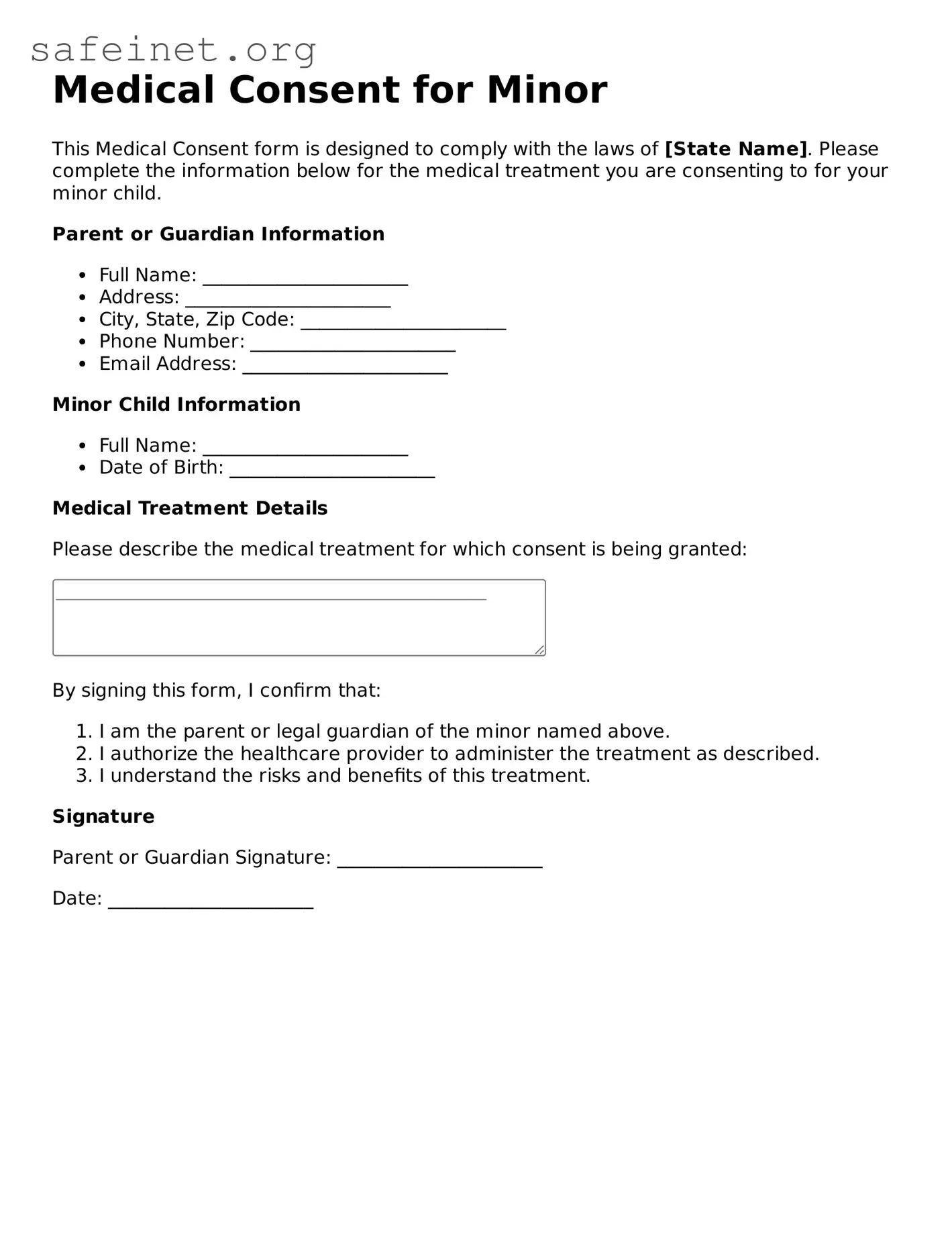Medical Consent for Minor
This Medical Consent form is designed to comply with the laws of [State Name]. Please complete the information below for the medical treatment you are consenting to for your minor child.
Parent or Guardian Information
- Full Name: ______________________
- Address: ______________________
- City, State, Zip Code: ______________________
- Phone Number: ______________________
- Email Address: ______________________
Minor Child Information
- Full Name: ______________________
- Date of Birth: ______________________
Medical Treatment Details
Please describe the medical treatment for which consent is being granted:
By signing this form, I confirm that:
- I am the parent or legal guardian of the minor named above.
- I authorize the healthcare provider to administer the treatment as described.
- I understand the risks and benefits of this treatment.
Signature
Parent or Guardian Signature: ______________________
Date: ______________________
